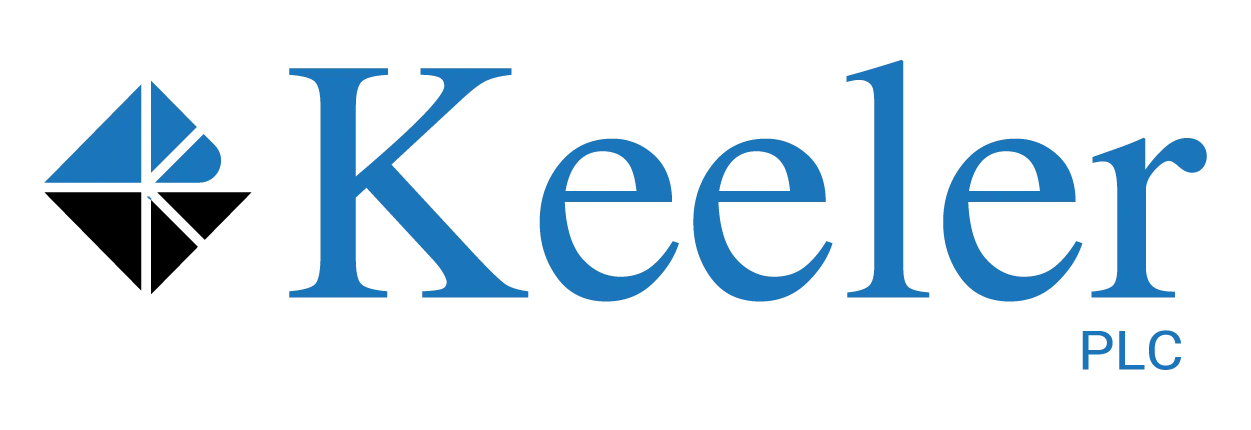Insights
So, Your Business is Not Early-Stage or Ready to Exit? Meet “Growth Private Equity”, and Prepare to Get Your Terms
By Steven Keeler
The World Between “VC” and “Buyout”
You’ve built a successful business to a point that it could really grow with outside equity financing. Your business is not “early-stage” (it has a history of proven revenue and market penetration). And you don’t have an appetite or ability to borrow more from your bank or a“mezzanine” debt lender (either because you think debt is too “expensive” or you don’t have the “recurring revenue” model of a “SAAS” business or you don’t have financeable assets to put up as collateral). So, venture capital (VC)) and debt financing don’t fit. And, you’re also not ready to sell all or a majority of the equity ownership of your company (either because you have more value to build or you are not ready for a new career), so a “buyout” by a “financial” buyer or private equity fund (BuyoutPE, whether or not including your keeping or “rolling over” some of your equity for buyer equity) or a sale to a corporate “strategic” buyer is not your first choice, at least for now.
GrowthPE is the world between VC and BuyoutPE. Especially if your business is in a “hot” sector like healthcare, energy, financial services, industrials, consumer cyclicals, IT, AI, logistics and supply chain, or others (yes, that covers a lot of you), Growth PE may be just the right option to financing your company’s growth, sharing the risks and returns of market and economic uncertainties and opportunities, and retaining a reasonable amount of company control.
VC investors generally push for “market” and standard terms that have evolved through years of startup-company investment deals. BuyoutPE investors expect you to give up control of your company. But GrowthPE investors are often more forgiving and flexible in terms of accepting more company-favorable terms, although they too will look for some economic (downside protection) and “governance” rights (i.e., “veto” rights over certain operating matters and major company transactions) that protect their position as a significant minority owner of your company.
A GrowthPE deal can be the best of both worlds – limiting the economic and governance rights you have to give to a VC and retaining more control over your future than would be permitted by a BuyoutPE investor. The key to protecting your company (and yourself) in a GrowthPE financing is to avoid giving the GrowthPE investor economic and governance terms that are closer to those that are appropriate for a VC investor, on the one extreme, or a BuyoutPE investor, on the other.
Economics: Investor Upside and Downside Protection
- No “Market” for GrowthPE. VC investors often demand preferred equity (whether convertible or “double-dip” “participating” and commonly including a “preferred return” that acts like interest on debt). BuyoutPE investors often allow the founders and management to move forward with some equity which is on par with or the same as their security (e.g., the BuyoutPE investor and you may each receive “common” equity with not “first-out” or “liquidation” preference), but you will give up control of your company. GrowthPE, the world in between VC and BuyoutPE, is much more flexible than VC or BuyoutPE, and there is no true “market” for economic terms. So be prepared (and have the confidence) to negotiate, if you are an attractive candidate for GrowthPE.
- Give On Downside Protection. A GrowthPE investor request for “preferred” equity (i.e., a security that is senior to your “common” equity that gives them “first-out” or a liquidation preference entitling them to their money back (and sometimes with interest or a “preferred return”) before you and other owners receive any money) may be acceptable. It depends on the terms of the preferred equity (e.g., whether convertible or participating, the latter of which gives the investor its money back and then a “double dip” participation in the upside on an “as-converted” basis, and whether they want any “coupon” or preferred return on their first-out). Many company founders will be comfortable with giving the GrowthPE “downside” protection but should focus on limiting the founders’ (and their management owners’ and prior investors’) “upside” dilution. This usually means negotiating against any “participating” preferred or a preferred equity with any or an excessive “preferred return”. The bottom line - don’t give in and permit the GrowthPE investor to negotiate a VC-appropriate term sheet for a GrowthPE deal.
- Business Control Over Economics. After negotiating economic terms that are more appropriate for a GrowthPE than a VC deal, focus on your ability to manage and grow your business as free as possible from the GrowthPE investor’s consent or “veto” rights and control (see the following checklist of typical negotiating terms).
- Ask for an Alternative Fee Arrangement. So-called “AFAs” are now common. They often include some element of fixed fees for certain phases of a transaction, discounted or blended hourly rates, and “cost-sharing”-purposed total fee discounts (including “busted deal” discounts which kick in if the deal does not close) and premiums to encourage efficiency and above-average results. Most law firms providing business transaction services are prepared to discuss an AFA, so business clients should be prepared to ask for them and have them tailored to the client’s and the transaction’s unique circumstances, goals and objectives.
- Manage the (Your) Transaction Process. A business deal is a dynamic and at times risky process, not just a stack of legal documents and memos (including those the client did not request). Most company sale or capital raising transactions will require the work of a multi-disciplinary team, including the client’s in-house management team (its “bandwidth” and capabilities are an important factor in the deal experience and cost), investment bankers, accountants and, of course, lawyers. As early in the process as possible, a transaction process and tasks schedule should be prepared to ensure that the left hand knows what the right hand is doing. The schedule should clarify the different roles of all team members and the tasks to be completed by each of them as of specified dates. Communication protocols are critical, so the process schedule should clarify who should be speaking with whom about what and, of course, the entire team should adhere to “need to know” channels and confidentiality. Most important, the process should be the client’s, not entirely the law firm’s, to ensure the client’s service experience is optimal and its goals and objectives are realized.
Standard GrowthPE “Investor Protection” Terms – Give and Take with Your Lawyer’s Guidance
Your willingness to concede, and the reasonableness of, the following GrowthPE requested terms will depend on your negotiated company valuation (which will determine the GrowthPE’s ownership percentage) and that ownership percentage (e.g., whether they are getting between 10% and 20%, or over 20%, of your company’s fully-diluted equity ownership):
- Affiliate Transfers. Most GrowthPE investors want the ability to transfer to their affiliates. Usually a give, but try to restrict transfers of equity to competitors.
- Co-Sale (“Tag-Along”) Rights. Minority investors typically seek a co-sale right (the right to sell some of their equity) on sales by founders, management or other investors. Consider limiting this right, but usually a give depending on the GrowthPE investor’s ownership percentage.
- Right of First Refusal. Gives the minority investor the right to purchase any shares you or other owners want to sell. Usually a give.
- *Forced Sale (“Drag-Along”) Rights and Obligations. It is reasonable to subject a GrowthPE investor to drag-along or forced sale rights in favor of the controlling owners (i.e., you and earlier investors holding a majority decide to sell control), but hard to get. The drag obligations and limitations (or the GrowthPE’s right to approve a company sale) are often one of the most hotly contested points. Carefully consider giving a GrowthPE investor control over your decision to sell your business.
- Registration (IPO) Rights. The investor’s right to have their stock registered if you go public. Not relevant for companies that are not likely to go public, but often requested. In any case, usually a give.
- Preemptive (Purchase) Rights. Minority investors should generally expect preemptive rights on future sales of securities by your company (i.e., the right to purchase enough new shares to maintain their percentage ownership if you raise additional capita;). Your company should negotiate standard carveouts for employee equity grants and issuances of securities to certain third parties (e.g., lenders, strategic partners and owners of acquisition targets), but usually a give.
- Legal Document Changes. Most amendment provisions will provide that your company’s organizational documents and other investment agreements can be amended by majority vote. Anticipate investor push back to limit amendments that impact their fundamental rights and interest, which are reasonable and often acceptable.
- Company Governance or Investor “Veto” Rights.
- Company Board. Depending on the investment size, a GrowthPE investor will often demand the right to elect a company board member or to appoint an observer to attend board meetings. If the GrowthPE investor adds non-financing value to your company, this is probably a good thing.
- Reports. Be prepared to provide certain periodic financial and other company status information to the investor.
- Investor “Veto” Rights. For larger minority investments (i.e, more than 10% and often more than 20%), GrowthPE investors often look for greater control of major transaction and operational matters through a set of veto rights. The closer the investment is to 50%, the more of the list the GrowthPE investor should expect. Depending on whether you give the GrowthPE investor a board seat, expect that they will look for investor director approval approval rights over certain operational matters and investor (not investor director) approval rights over matters related to company capital structure and major transaction. This is an area where significant negotiation of specific matters or transactions requiring investor consent should be expected. Please let us know if you would like a list of the operational and major transaction actions that show up in these negotiations.
Take Aways
GrowthPE investments continue to be an active trend as both traditional VC and BuyoutPE investors seek to get foothold investments in later-stage, “emerging growth”, technology-enabled and other promising companies. If your company has sound revenue and profit fundamentals and growth opportunities, GrowthPE may be the best option for structuring a “two-step” exit from your business (i.e., the GrowthPE investment will position your company for a later BuyoutPE or strategic sale at a more attractive price). Although GrowthPE can be more creatively tailored to your company’s strengths and needs, it is critical that you and your advisors smartly negotiate the terms of the deal, as they will impact both your future control of company operations and an eventual exit.
Read More

